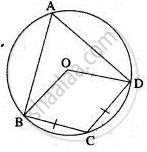Advertisements
Advertisements
Question
In triangle ABC, AB = AC. A circle passing through B and c intersects the sides AB and AC at D and E respectively. Prove that DE || BC.
Solution 1
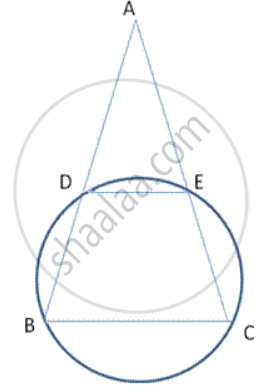
To prove = DE II BC
Proof: In cydic quadrilateral DECB
∠ DEC + ∠ DBC = 80° - ( 1) (Opposite angles of cyclic quadrilateral)
Also, ∠ AED + ∠ DEC = 80° - (2) (Linear pair)
From (1) and (2), we get,
∠ DBC = ∠ AED - (3)
AB= AC (given)
∴ ∠ABC = ∠ ACB - (4) (angles opposite to equal sides of triangle)
From (3) and ( 4) ⇒ ∠ AED = ∠ ACB
But, these are corresponding angles
∴ DE II BC
Solution 2
In order to prove that DE || BC, it is sufficient to show that ∠B = ∠ADE.
In Δ ABC, we have
AB = AC ⇒ ∠B = ∠C ...(i)
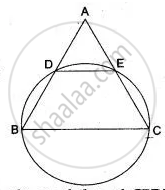
In the cyclic quadrilateral CBDE, side BD is produced to A.
∴ ∠ADE = ∠C ...(ii)( ∵ Exterior angle = Opposite interior angle )
From (i) and (ii), we get
∠B = ∠ADE.
Hence, DE || BC. ...Hence proved.
APPEARS IN
RELATED QUESTIONS
In the given figure, AB = AC. Prove that DECB is an isosceles trapezium.

In a cyclic quadrilateral ABCD , AB || CD and ∠ B = 65° , find the remaining angles.
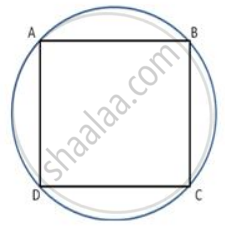
MABN are points on a drde having centre O. AN and MB cut at Y. If ∠ NYB = 50" and ∠ YNB = 200, find ∠ MAN and reflex angle MON.
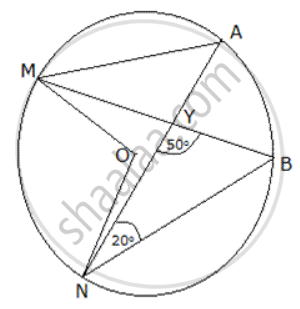
ABCD is a cyclic quadrilateral, AB and DC are produced to meet in E. Prove that ΔEBC ≅ ΔEDA.
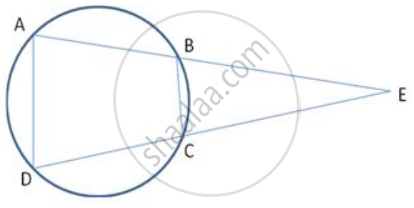
In the figure, ABCD is a cyclic quadrilateral with BC = CD. TC is tangent to the circle at point C and DC is produced to point G. If angle BCG=108° and O is the centre of the circle, find: angle DOC

ABCDE is a cyclic pentagon with centre of its circumcircle at point O such that AB = BC = CD and angle ABC=120°.
Calculate: ∠ BED.
In the following figure, O is the centre of the circle. Find the values of a, b and c.

In the figure, given below, find: ∠ADC, Show steps of your working.
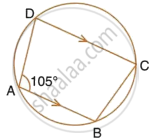
In the figure, ∠DBC = 58°. BD is a diameter of the circle. Calculate : ∠BDC
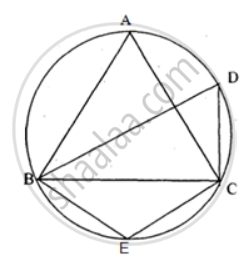
In the given figure O is the center of the circle, ∠ BAD = 75° and chord BC = chord CD. Find:
(i) ∠BOC (ii) ∠OBD (iii) ∠BCD.
